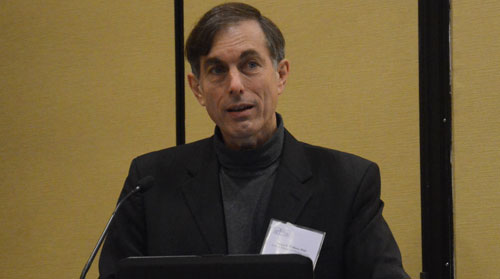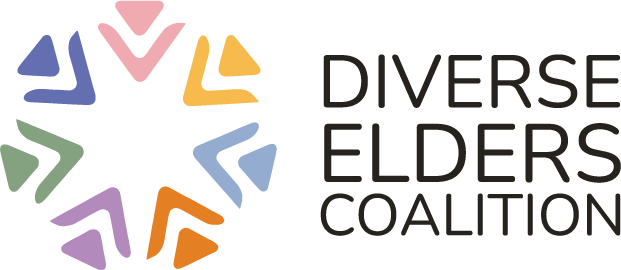by Neil Gonzales. This article originally appeared on New America Media.
NEW ORLEANS –- The number of elderly Americans is rising quickly with much of that growth bursting out of Filipino and other minority communities, according to experts speaking at a weeklong conference on aging issues.
But even as the Filipino American population and its number of elders are expected to continue to grow, aging concerns within that community remain in the background.

UCLA’s minority research director Dr. Steven Wallace (April Xu/Sing Tao Daily)
“I don’t think there’s much attention at all being paid to Filipino elder issues” even though that ethnic group “will have a large number of elder adults,” said Steven Wallace, who directs UCLA’s national center for the Resource Centers for Minority Aging Research, a National Institute on Aging initiative to improve the health of older minorities.
Wallace was among the many experts, researchers and others converging at the Gerontological Society of America’s Annual Scientific Meeting in New Orleans. The Washington, D.C., based aging-research organization’s conference in November featured symposiums, lectures and other events exploring the latest findings and issues concerning the older-adult population.
Older Americans to Double
According to data provided by Wallace, the number of Americans age 65 or older will reach nearly 84 million in 2050. In 2012, that number was 43 million.
“The bottom line is the number of older adults will double in the next 30 years,” he said, “so whether you’re looking at social services or housing or nutrition or entertainment or any of the issues that relate to aging, the absolute numbers will double.”
Communities of color will account for the “fastest growth in that aging population,” he noted, adding that economic security is especially challenging for elder minorities, “which makes Social Security, Medicare, Medicaid and other social programs particularly important for those populations.”
By 2050, the number of Asian elders will jump about fourfold from 1.6 percent to 6 percent of all older Americans while it will rise five times for elderly Latinos from 3.1 percent to 15.4 percent. In contrast, the number of elderly Caucasians will go up about 1.5 times from 34.2 percent to 51 percent.
“So that’s part of the story — the increasing diversity of the American older-adult population,” Wallace said.
The Model Minority Myth
But Yuri Jang, associate professor of social work at University of Texas, questioned whether the country is ready for that growth. “There’s a lot of work still needed in the research and service side,” Jang said following her talk at the conference.
Her session highlighted how the model minority myth can hurt efforts to address the needs of older Asian Americans. That myth portrays Asians as being well educated, affluent and healthy when it’s not the case in reality.
For example, 13 percent of Asian Americans and Pacific Islanders (AAPI) age 65 or older were living in poverty in 2012 compared to 9.5 percent of all elders, according to an AARP study on the economic condition of elderly minorities.
But having sessions at the conference focusing on Asian seniors “is a good example of a lot of people becoming interested in this population,” Jang said. Increasingly, “we’re getting better data sets, and people are wanting to know more.”
Still, aging issues within the Filipino community — although it has a strong presence in the U.S. — don’t seem to be getting noticed compared to those involving other Asian groups. “When people think Asian elders, they think Chinese and maybe Korean (although) the Filipino population is the second largest Asian population after the Chinese,” Wallace said.
A Fifth of U.S. Asians Filipino
According to a data brief from the Seattle-based advocacy group National Asian Pacific Center on Aging, Filipinos accounted for 20 percent of the AAPI elder population in 2010 –- the second largest behind Chinese (26 percent).
Among the key health issues facing elderly Filipino Americans in particular have been a rise in lung-cancer cases, a high likelihood for developing type-2 diabetes and a prevalence of hypertension, according to recent studies.
“There’s definitely a need for more attention, thinking through what distinguishes Filipino elders from the average senior services and then developing the appropriate community support, family aid and outreach efforts to reach those elders,” Wallace said.
Neil Gonzales wrote this article for Philippine News, where he is chief Northern California correspondent, with the support of a journalism fellowship from New America Media, the Gerontological Society of America and AARP.

